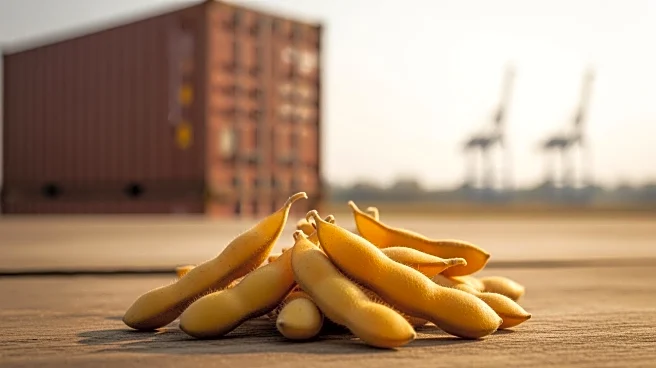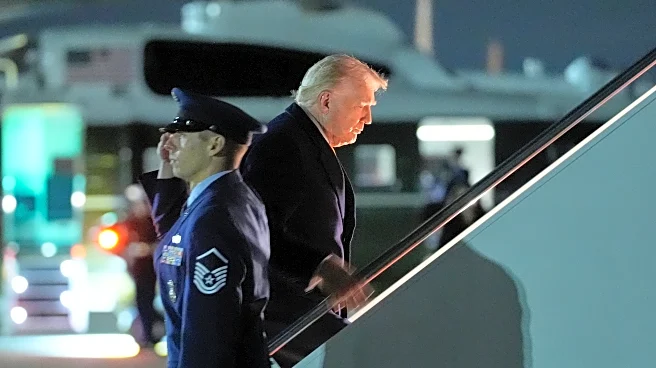What's Happening?
Recent data from the U.S. Department of Agriculture reveals that China has purchased only 332,000 metric tons of U.S. soybeans since a trade agreement was reached between President Trump and Chinese leader Xi Jinping. This figure falls significantly short
of the 12 million metric tons that were promised by Agriculture Secretary Brooke Rollins. The tariffs imposed by President Trump have led China to shift its soybean purchases to South American countries, primarily Brazil, where soybeans are more competitively priced. Despite assurances from Chinese officials that more purchases will be made, the high tariff of 24% on American soybeans remains a barrier. The lack of demand from China has caused soybean prices to drop, impacting American farmers who were hopeful for resumed trade.
Why It's Important?
The ongoing trade tensions and tariffs have significant implications for U.S. agriculture, particularly soybean farmers who rely heavily on exports to China, the world's largest soybean buyer. The reduced purchases from China threaten the financial stability of American farmers, who are already facing increased costs for fertilizer, seed, and equipment. The situation underscores the broader economic impact of trade policies and tariffs, which can lead to shifts in global supply chains and affect domestic industries. The potential loss of Chinese market access could result in long-term challenges for U.S. agriculture, necessitating government intervention or aid to support farmers.
What's Next?
The future of U.S.-China soybean trade remains uncertain, with American farmers awaiting further details on potential purchases. The Trump administration may need to consider additional aid packages to support farmers affected by the trade war. The ongoing negotiations and tariff adjustments will be crucial in determining the extent of China's commitment to purchasing U.S. soybeans. Stakeholders, including the American Soybean Association, are closely monitoring developments and advocating for measures to mitigate the impact on farmers.
Beyond the Headlines
The trade tensions highlight the complexities of international trade agreements and the influence of geopolitical factors on economic decisions. The reliance on a single major buyer like China exposes vulnerabilities in the U.S. agricultural sector, prompting discussions on diversifying export markets. The situation also raises questions about the effectiveness of tariffs as a tool for negotiating trade deals and their unintended consequences on domestic industries.















